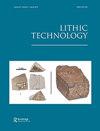Function, Style, and Standardization: Is the Proximal or Distal End of a Middle Stone Age Point More Variable?
IF 1.2
3区 社会学
Q2 ANTHROPOLOGY
引用次数: 1
Abstract
ABSTRACT Middle Stone Age (MSA) point styles may reflect the development of regional identities of human social groups. MSA people likely used these points for various functions including as weapon tips. Recent work in cultural evolution suggests that functional aspects of technology tend to be more standardized and subject to negative selective pressures, while stylistic aspects are highly visible and tend to be more variable. This study examines the patterns of segmented (proximal vs. distal) standardization for unretouched MSA points from six archaeological assemblages using landmark-based geometric morphometrics to quantify shape variation. Contrary to expectations, our results show that the proximal end has greater shape variation than the distal end. Segregating within point variation provides clues to past function and style patterns in the MSA. This approach also opens new avenues for exploring ethnographic and recent archaeological projectile points.功能、风格和标准化:中石器时代点的近端还是远端变化更大?
本文章由计算机程序翻译,如有差异,请以英文原文为准。
求助全文
约1分钟内获得全文
求助全文

 求助内容:
求助内容: 应助结果提醒方式:
应助结果提醒方式:


